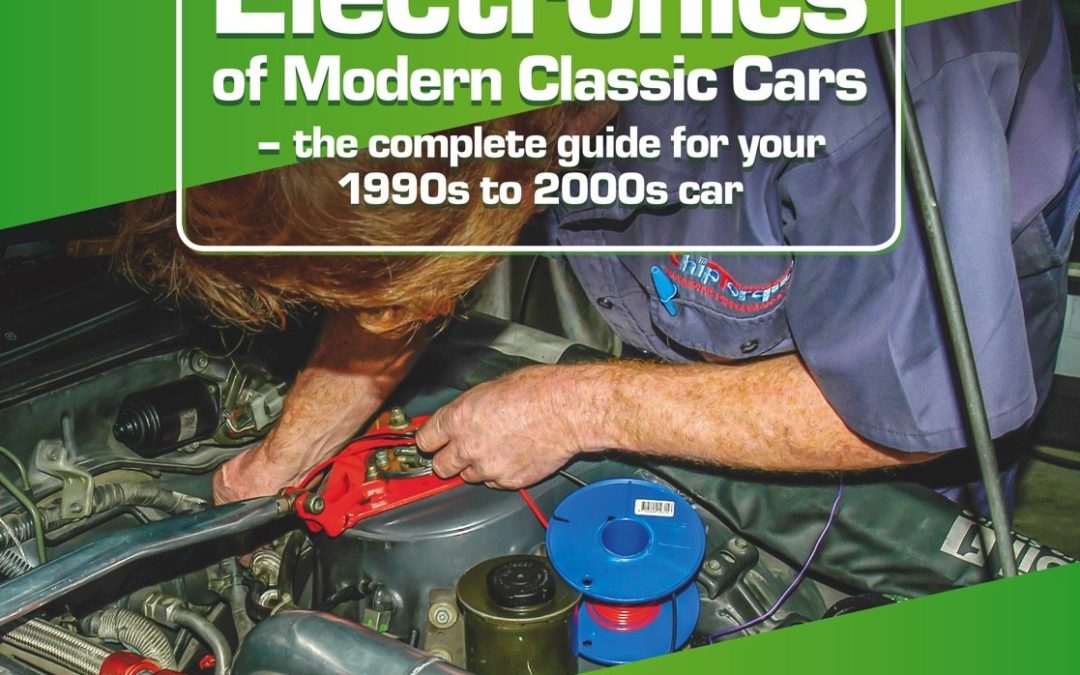
Modifying the Electronics of Modern Classic Cars is the complete guide to modifying the electronics of your modern classic car.
Cars of the 1990s and 2000s have sufficient electronic systems to achieve great outcomes, but they’re not so complex that they’re impossible to modify. The missing link, until now, has been a hands-on manual on how to achieve those results. Well, here it is!
This book covers everything from cheap modifications that allow you to adjust engine fueling and ignition timing, to modifying car systems like power steering and even stability control. Easy upgrades to lighting, sound systems and the dashboard – right through to fitting and tuning programmable engine management. Photos and circuit diagrams guide you each step of the way.
All the car modifications are practical, and have been tried and tested by the author. From a 660cc turbo front-wheel drive screaming to 8500rpm on standard engine management but with big injectors… to a DOHC V8 rear-wheel drive with modified traction control… to a twin-turbo all-wheel drive with a custom torque split controller. Even modifying the re-gen braking on a hybrid!
Modifying the Electronics of Modern Classic Cars is essential reading for anyone who wants to exploit the true electronic potential of their 1990s-2000s cars.
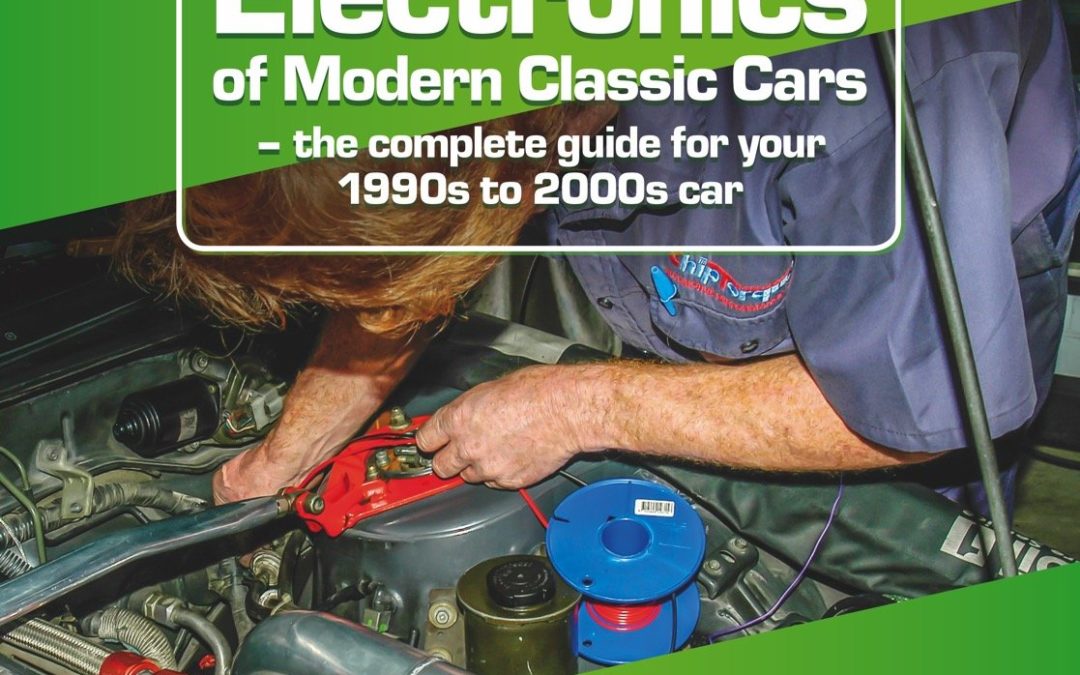
The complete guide for your 1990s to 2000s car (WorkshopPro)
Modifying the Electronics of Modern Classic Cars is the complete guide to modifying the electronics of your modern classic car.
Cars of the 1990s and 2000s have sufficient electronic systems to achieve great outcomes, but they’re not so complex that they’re impossible to modify. The missing link, until now, has been a hands-on manual on how to achieve those results. Well, here it is!
This book covers everything from cheap modifications that allow you to adjust engine fueling and ignition timing, to modifying car systems like power steering and even stability control. Easy upgrades to lighting, sound systems and the dashboard – right through to fitting and tuning programmable engine management. Photos and circuit diagrams guide you each step of the way.
All the car modifications are practical, and have been tried and tested by the author. From a 660cc turbo front-wheel drive screaming to 8500rpm on standard engine management but with big injectors… to a DOHC V8 rear-wheel drive with modified traction control… to a twin-turbo all-wheel drive with a custom torque split controller. Even modifying the re-gen braking on a hybrid!
Modifying the Electronics of Modern Classic Cars is essential reading for anyone who wants to exploit the true electronic potential of their 1990s-2000s cars.
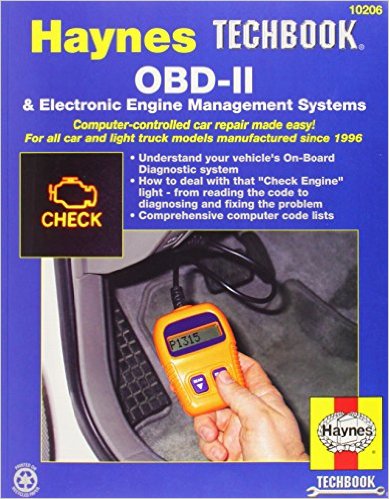
This manual takes the mystery out of Second-Generation On-Board Diagnostic Systems allowing you to understand your vehicles OBD-II system, plus what to do when the “Check Engine” light comes on, from reading the code to diagnosing and fixing the problem. Includes a comprehensive list of computer codes.
Computer-controlled car repair made easy! For all car and light truck models manufactured since 1996.
Understand your vehicle’s On-Board Diagnostic system
How to deal with that “Check Engine” light–from reading the code to diagnosing and fixing the problem
Comprehensive computer codes list
Diagnostic tools:
Powertrain management fundamentals
OBD-II “monitors” explained
Generic trouble codes that cover all models!
Manufacturer-specific trouble codes for GM, Ford, Chrysler, Toyota/Lexus and Honda/Acura vehicles
Let your car’s computer help you find the problem!
Component replacement procedures
Glossary and acronym list
Fully illustrated with over 250 photographs and drawings

Without a doubt, GM’s LS Series engines are the hottest thing going right now. Thousands of enthusiasts are either modifying their cars factory equipped with these engines, supported by a robust aftermarket, or converting their vintage muscle cars to run with these efficient and powerful engines. Of course, with technology comes complexity. To get the maximum performance and efficiency out of any modern engine, you have to have a solid understanding of the technology involved and how to make the most of it.
In How to Use and Upgrade to GM Gen III LS-Series Powertrain Control Systems, the benefits, advantages and nuances of this robust and efficient control system are thoroughly examined. Do you have a vehicle already equipped with an LS Series engine but want to do a transmission swap? Do you want to convert from a cable throttle to an electronic throttle, and make systems like cruise control integrate? Do you want to eliminate the dreaded Optispark distributor from your LT1/LT4? Perhaps convert your Gen I small-block to distributor-less ignition? Or convert to universal OBD-II diagnostics? Do you want an affordable control system to run fuel injection, ignition timing, cooling fans, air conditioning, and electronic overdrive transmissions while swapping all if this into your classic muscle car?
How to Use and Upgrade to GM Gen III LS-Series Powertrain Control Systems will cover all of these applications and more. Not only are the performance and flexibility aspects covered in great detail, but there are significant cost benefits as well. Implementing a GM Series III PCM based control system will not only afford you great flexibility and tune-ability, but it can be accomplished significantly cheaper than most aftermarket alternatives. If you are planning any of these complex swaps or just looking to thoroughly understand the nuances of modern GM control systems, this book is a vital addition to your technical library.
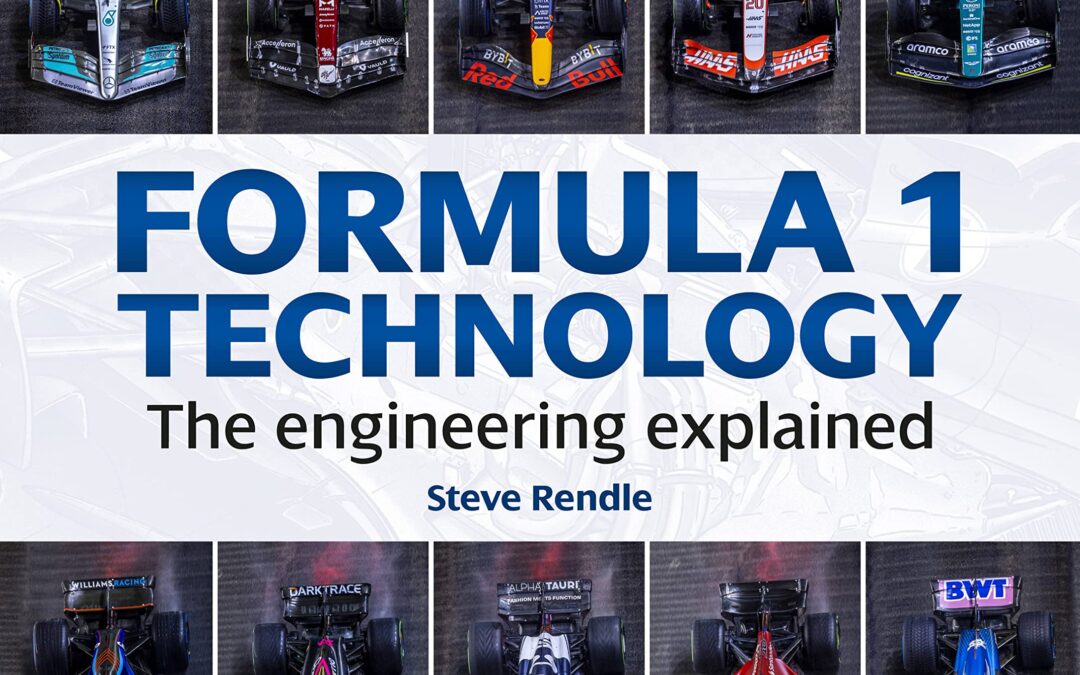
This book explains how modern Formula 1 cars work and demystifies the extraordinary technology they contain.
By meticulously dissecting an F1 car into its constituent components, the author describes the design, engineering and function of every element, enabling the reader to develop a full understanding of how it all comes together to form a competitive package. The text is expertly written to satisfy both the engineering-minded reader as well as any enthusiast of the sport who wants to delve deeper, and supplemented by a superb range of close-up photographs, technical illustrations and diagrams.
- Chassis: design and manufacture; survival cell, fuel tank, impact structures, stiffness.
- Aerodynamics: principles, front and rear wings, turning vanes, sidepods, floor, wheels and their effect, brake ducts, suspension components, diffuser, Drag Reduction System (DRS).
- Suspension, steering and brakes: suspension layout, geometry and adjustments; steering wheel, column and geometry; brake hydraulics, brake-by-wire system, discs, calipers, pads and cooling.
- Power unit: the hybrid era, Internal Combustion Engine (ICE), Energy Recovery System (ERS), fuel.
- Transmission: clutch, gearbox, differential, driveshafts.
- Electronics: starting system, Electronic Control Unit (ECU), sensors, radio and data communications, cockpit display, cameras.
- And more: wheels and tyres; hydraulic system; safety equipment; cockpit controls.
- Chapters about car design and set-up.
- Use of analysis and simulation techniques such as computational fluid dynamics (CFD), wind-tunnel testing and rig testing. All F1 fans will find this book a deeply rewarding companion to enhance their appreciation of the sport.
All F1 fans will find this book a deeply rewarding companion to enhance their appreciation of the sport.
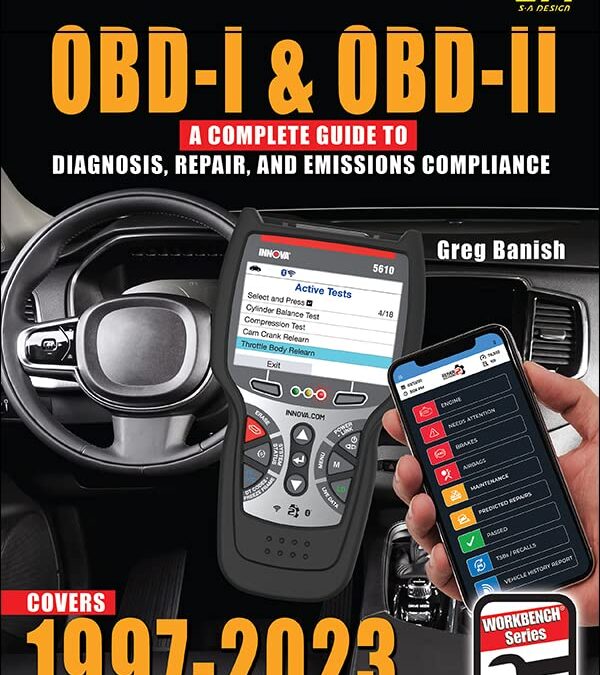
Onboard diagnostics (OBD) systems have been an integral part of vehicle design for decades, as OBD-II became mandatory in 1996 for all cars manufactured in the United States. Almost every aspect of the diagnostics system evolved from emissions requirements that were placed on the automotive industry. Manufacturers responded with increasing complexity in the electronic controls and reporting of errors. Fortunately, some commonization followed in the industry, which made the job of a repair technician or do-it-yourself enthusiast slightly easier when working on these challenging systems. Passing emissions testing has become critically important to manufacturers of high-performance parts and installation shops. Both the US Environmental Protection Agency (EPA) and California Air Resources Board (CARB) have assessed massive fines for violations of the Clean Air Act based on information that is available from the vehicle’s OBD system. Many states now require vehicles to pass an OBD check to renew the registration, making proper operation even more important to consumers.
OBD-I & OBD-II: A Complete Guide to Diagnosis, Repair, & Emissions Compliance is an insider’s guide to modern original equipment manufacturer (OEM) diagnostics systems. As a former diagnostics and performance calibration engineer, Greg Banish guides you through critical electronic control unit (ECU) functions that ultimately lead to why the “check engine” light on the dash is lit. Strategies are provided for how to begin looking for a solution when problems are detected. Listing every imaginable repair is impossible, but this book provides a solid foundation from which to work by explaining the ECU’s logic in plain English. Practical examples from the author’s experience highlight important lessons that will save hours of frustration and confusion. In addition to repair tips, sound advice is given for those looking to modify their vehicles while maintaining the full functionality of the emissions and diagnostics systems.
Modern diagnostics systems can be a blessing or a curse, depending on your level of understanding. This book helps you harness the power of the diagnostics inside the ECU to improve the ability to find and make the right repair the first time. This book shows that by using commonly available electronic tools, the consumer has the power to access a wealth of information about his or her vehicle. It also helps those who are looking to improve performance do so without compromise to the environment or enforcement agencies. Whether you want to repair the vehicle yourself or simply want to possess an understanding of how these systems work while dealing with service professionals, this is the guide you need.
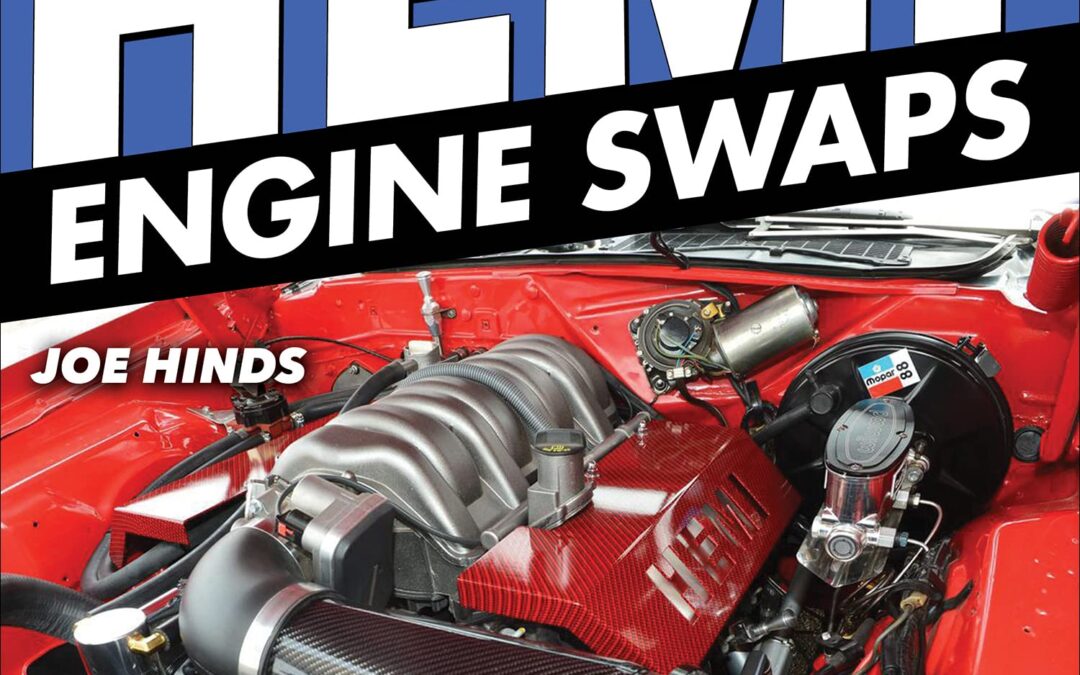
Have you made plans for a new Hemi swap into your classic car? Maybe you’re just curious about the process and want to know how much work is involved. Either way, New Hemi Engine Swaps: How to Swap 5.7L, 6.1L, 6.4L, and Hellcat Engines into Almost Anything has you covered!
Even casual enthusiasts are aware of how many people are swapping modern technology into vintage chassis. Successful LS swaps have been common for more than a decade. They seem to be everywhere among GM enthusiasts.
On the Mopar side, the new Hemi platform is now 20 years old, so plenty of salvage-yard cores are available. With the introduction of the new Hellcat in 2015 (as well as a more robust crate-engine program in recent years directly from Mopar), aftermarket manufacturers have recently seen the wisdom of making peripherals and parts to simplify the process of this swap. Suddenly, swapping a crate Hemi seems as achievable as an LS swap.
In New Hemi Engine Swaps: How to Swap 5.7L, 6.1L, 6.4L, and Hellcat Engines into Almost Anything, expert Joseph Hinds guides you through the process of turning your vintage ride into a modern street machine. The essentials are covered, including engine mounts, transmission cross members, headers that actually fit, and solutions for other common issues. Also covered are fuel-supply items (pumps and tanks) and engine-compatibility concerns (oil filter locations and oil-pan accommodations). Finally, the biggest concerns for most are the wiring, modern power train control modules (PCMs), computer controls, and fuel injection, all of which are covered here as well. There are even step-by-step instructions to fit a modern Hemi into an early-1970s-era Duster as well as a feature about programming aftermarket electronic fuel-injection (EFI) systems.
Now that the degree of difficulty in performing these swaps no longer requires a degree in computer science with welding certifications on the side, many are looking at their vintage Mopars in a new light. Whether you want to do this yourself, farm it out to a professional, or if you are just curious about how it is done, this is the guide for you.

Save time and hundreds of dollars by learning how to repair and overhaul your car’s brakes.
There are many automotive tasks that are best left to qualified and certified professionals when considering repairing your automobile. There are also many tasks that can be tackled by the weekend do-it-yourselfer with a decent level of instruction. While just about any system repair or overhaul on more modern cars has gotten more complex over time, brake diagnosis and repair is still well within reach for the home mechanic with a reasonable set of hand tools.
In Brake Repair: How to Diagnose, Fix, or Replace Your Car’s Brakes Step-By-Step, ASE technician and professional instructor Steven Cartwright takes you through the entire process of servicing your car’s brakes to like-new condition. Ten informative chapters cover everything you will need to know, including chapters on brake history, an overview of function, types of brakes, power assist, troubleshooting, electronic controls such as ABS, and finally, a complete chapter showing you how to do an entire brake job in step-by-step color photos.
With traditional dealership labor rates hovering around $125 per hour these days, it is easy for a standard four-wheel disc brake job to cost close to $1,000 when all is said and done. With the help of this book, you will be able to competently and confidently complete the task in similar fashion for less than half the cost, paying for this book many times over the very first time you use it. Add this valuable tool to your library today.
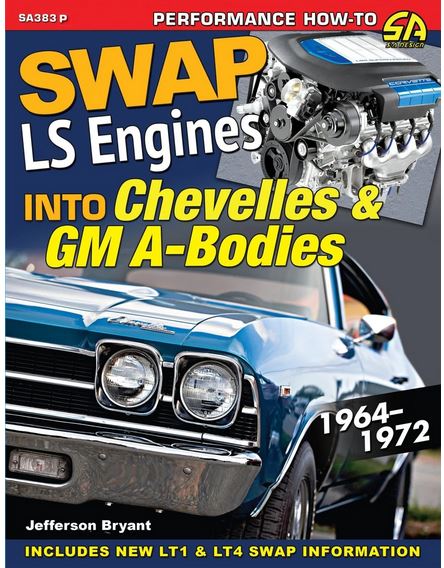
Make swapping a GM LS Engine into your 1964-1972 Chevelle or other GM A-Body as smooth as possible by learning the essential procedures, solutions to common problems, and time-saving techniques.
Jefferson Bryant, author of LS Swaps: How To Swap GM LS Engines into Almost Anything, has performed many LS swaps throughout his career and has transplanted the LS into several A-Body cars. In this comprehensive guide, he provides detailed step-by-step instructions for installing an LS powerplant into a Chevelle, Buick GS, Oldsmobile Cutlass, and Pontiac GTO. To successfully install an LS engine, you need to select or fabricate motor mounts and adapter plates to mount the engine to the chassis. Also, you need to integrate the electronic engine controls and wiring harness to the A-Body car. If you run a fuel-injection system, a new tank or high-pressure fuel pump, fuel lines, and related equipment must be installed. Bryant covers all of these crucial steps and much more. In addition, he performs a new LT swap into an A-Body car.
The GM LS engine has revolutionized the muscle car and the high-performance V-8 market. It has become a favorite engine to swap into classic cars because it offers a superior combination of horsepower, torque, and responsiveness in a compact package. As such, these modern pushrod V-8 engines are installed in vintage GM muscle cars with relative ease, and that includes Chevelles and other popular GM A-Body cars. In fact, General Motors manufactured about 500,000 Chevelles and A-Body cars between 1968 and 1970 alone.
Swapping an LS engine into an A-Body is made much easier with a comprehensive guidebook such as this, whether you plan on doing it yourself or decide to have a shop do it for you. A huge and thriving aftermarket provides a wide range of suspension, brake, steering, chassis, and other parts that produce functional improvements. Before you tackle your LS Swap project, arm yourself with this vital information to guide you through the process.
The photos in this edition are black and white.

A fully illustrated history of the Land Rover 101 One-Tonne – the forward-control military vehicle developed as a gun tractor for the British Army, in production from 1975-1978. Including specification guides, production histories and original photography, Land Rover Military One-Tonne is an essential guide to these small yet powerful 4 x 4 vehicles
Design and prototypes – from 6-cylinder to V8 and the abandoned powered-axle trailers
The 101 in British military service between 1975 and 1998, including home and overseas deployments
The 101 variants – ambulances, Rapier tractors, hard-bodied versions for electronic warfare and special field conversions
Sales to overseas military authorities
Advice on buying and owning a 101 today
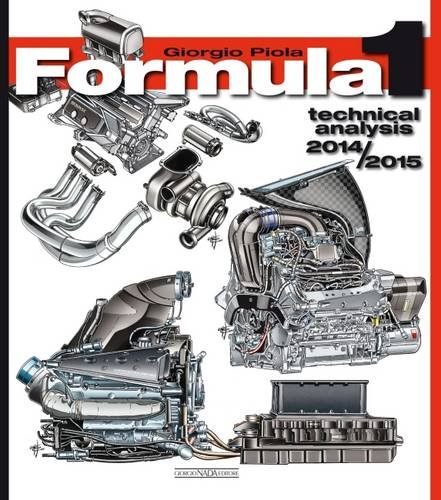
Radical changes in terms of technology and regulations marked the 2014 season, with the cars being equipped with 1600 cc, six-cylinder turbocharged engines with dual internal combustion and electrical power delivery (the so-called Power Unit) in place of the classic naturally aspirated V8s. Electronically controlled rear braking and a series of aerodynamic restrictions were also introduced, the latter having a major influence on the external appearance of the cars which were very different to their predecessors. These changes and innovations also had significant sporting repercussions with the Mercedes of Rosberg and Hamilton undisputed protagonists of the World Championship, the surprising Daniel Ricciardo doing better than his teammate Vettel and the Maranello team featuring in another grey season with Fernando Alonso already heading towards McLaren. Revealing the technical secrets of the 2014 cars and providing a broad preview of the season to come is as ever Giorgio Piola who, drawing by drawing, illustrates and describes in the most minute detail the entire World Championship field.

In 1997 Chevrolet did the unthinkable: they re-designed the most popular and most modified engine in American history.
The Chevrolet small-block V-8 made its debut in 1955, and with its arrival, Chevrolet instantly leaped to the forefront in the minds of hot rodders and performance enthusiasts alike. While the engine grew in displacement and technology over the next 30 years, its basic design remained unchanged . . . until 1997, when the Generation III LS1/LS6 engine design was introduced. The LS1 engine first appeared in the 1997 Corvette, and soon followed in the Camaro Firebird and thousands of full-size Chevy trucks and SUVs. It also powers the hot new Pontiac GTO!
This book is essential for the enthusiast who wants to get the most performance out of this new engine design but is only familiar with the older Chevy small-blocks. Covered is everything you need to know about these engines, including the difficult engine removal and installation, simple engine bolt-ons, electronic controls for the Generation III engine, and detailed engine builds at four different power levels.

“As tools for tuning modern engines have become more powerful and sophisticated in recent years, the need for in-depth knowledge of engine management systems and tuning techniques has grown. Tuning engines can be a mysterious art, as all engines need a precise balance of fuel, air, and timing in order to reach their true performance potential.
Engine Management: Advanced Tuning explains how the EFI system determines engine operation and how the calibrator can change the controlling parameters to optimize actual engine performance. This book takes engine-tuning techniques to the next level. It is a must-have for tuners and calibrators and a valuable resource for anyone who wants to make horsepower with a fuel-injected, electronically controlled engine.
Author Greg Banish is a calibration engineer with extensive aftermarket performance calibration experience. With over a thousand unique calibrations performed over five years, he has worked with enthusiasts and OEMs alike to improve the performance and driving behavior of a wide range of vehicles.
The book contains detailed equations, graphs, and illustrations. Also included are valuable and practical examples, including real-world examples based upon the author’s experience that will help more advanced readers apply this new information to situations that are commonly seen during calibration.”
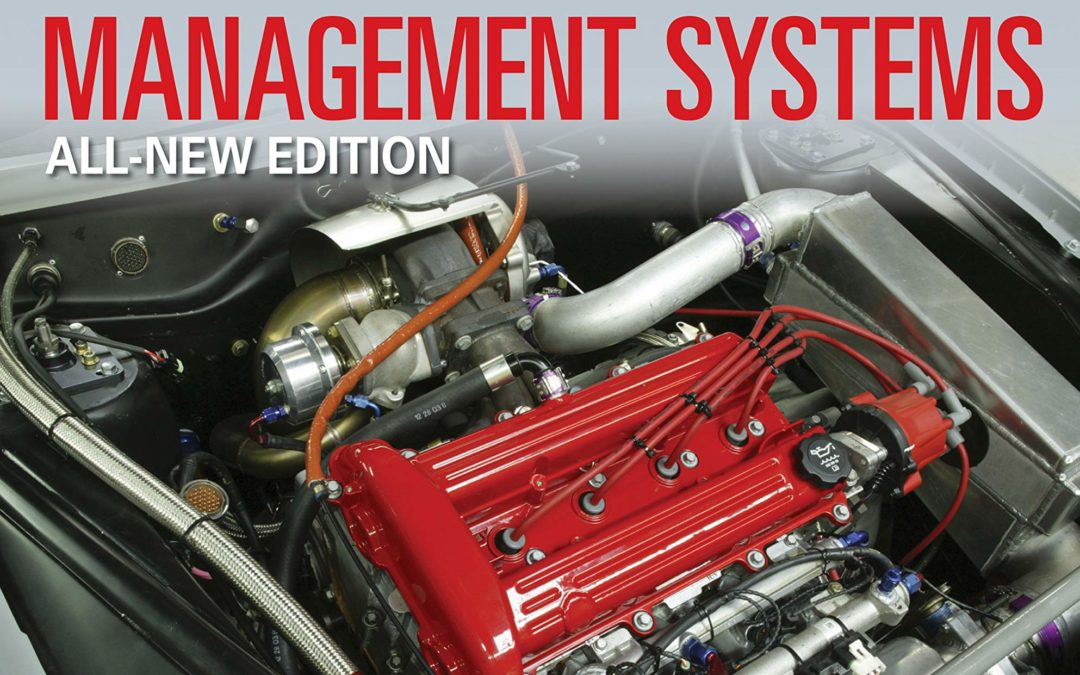
All New Edition: Upgrade Your Engine to Increase Horsepower (Motorbooks Workshop)
Understanding fuel injection and engine management systems is the key to extracting higher performance from today’s automobiles in a safe, reliable, and driveable fashion.
Turbochargers, superchargers, nitrous oxide, high compression ratios, radical camshafts: all are known to make horsepower, but without proper understanding and control of fuel injection and other electronic engine management systems, these popular power-adders will never live up to their potential and, at worst, can cause expensive engine damage.
Drawing on a wealth of knowledge and experience and a background of more than 1,000 magazine articles on the subject, engine-control expert Jeff Hartman explains everything from the basics of fuel injection to the building of complex project cars. Hartman covers the latest developments in fuel-injection and engine management technology applied by both foreign and domestic manufacturers, including popular aftermarket systems.
No other book in the market covers the subject of engine management systems from as many angles and as comprehensively as this book.
Through his continuous magazine writing, author Jeff Hartman is always up-to-date with the newest fuel-injection and engine management products and systems.
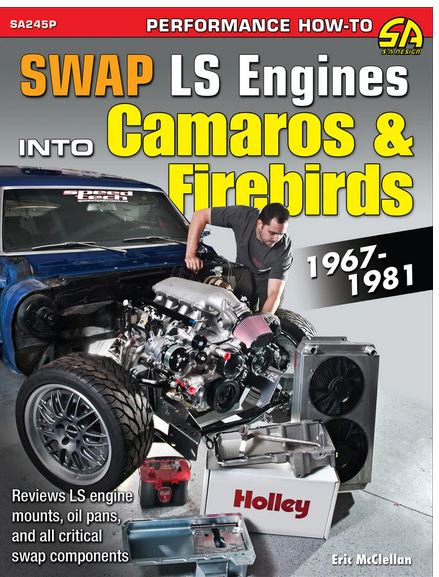
The 1967-1981 Camaros and Firebirds are enduring classics that include the Z28, Firebird Formula 400, and the Smokey and the Bandit edition Trans Ams. But many owners want their rides to have the latest and greatest in GM engine technology and performance, and that’s the LS engine. These F-Body cars readily accept these compact, lightweight modern V-8 engines. The LS engines produce more horsepower per cubic inch than almost all other pushrod V-8 engines, so the combination of the LS engine and a Camaro or Firebird make for an extraordinary performance car. And that’s precisely why these engine swaps have become so popular.
To perform a professional caliber LS engine swap into a Camaro or Firebird, you need proper planning, the right combination of parts, and information to complete the project. Swap LS Engines into Camaros & Firebirds: 1967-1981 provides excellent instruction and guidance for selecting the best engine for a budget, choosing the adapter plates and engine mounts, dropping the engine into the car, selecting the ideal transmission and drivelines, and completing all facets of the swap. You need to ensure that all the other components on the car are compatible with the engine, so author McClellan instructs readers how to integrate the electronic engine control system on the early F-Body cars as well as select and install exhaust, intake, fuel pumps, and upgrade cooling system for the high-performance LS.
While the swapping process is covered in detail, the author also provides a helpful Gen III and Gen IV LS engine guide, so the reader finds the best performing and reliable engine suited for a particular car and application, such as Pro Touring, drag racing, and high-performance street. In addition, the author explains how to shop for and buy a used LS engine from a salvage yard, so you get a good engine with all required accessories. When you are ready to swap a stock powerplant engine for a GM LS, you are going to need this book.
The photos in this edition are back & white.

















